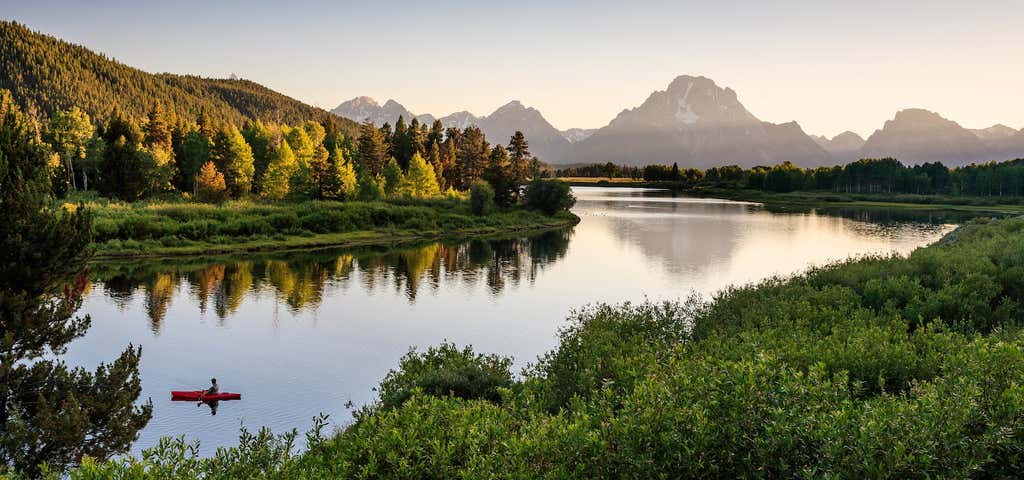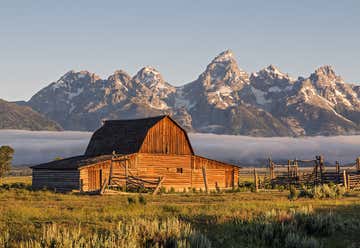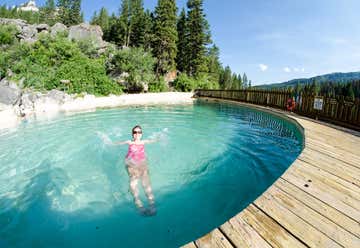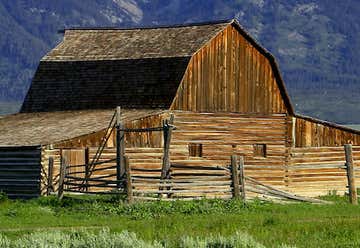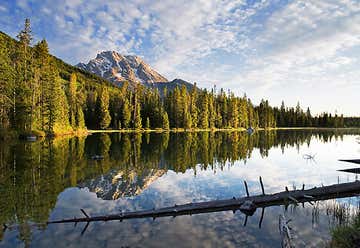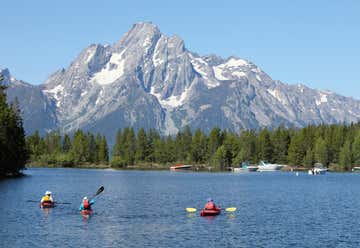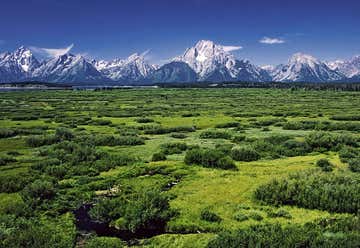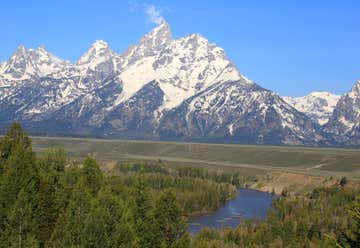Grand Teton National Park may share a border with Yellowstone, but the two parks might as well be worlds apart. Yellowstone is known for its geothermal natural wonders, but Grand Teton offers a more peaceful experience. You don't have to worry about boiling hot geysers or supervolcanoes at Grand Teton, all you need to do is sit back and enjoy the rugged mountains, beautiful valleys, and the abundant wilderness wonders that the park has to offer.
Some tips for visiting Grand Teton National Park:
-There are some shuttles and plenty of roads through the park, but biking is a really effective way to get around. It allows you the freedom to take more rugged trails and really appreciate the views! -The park itself isn't huge, it's only 484 square miles (compared to Yellowstone's 3.5 thousand square miles), but the area around it is also worth exploring. The National Elk Refuge next door is a great way to spend a day, as are the National Forests, and, of course, Yellowstone. -Check out the ranger activities here. From tipi demonstrations to campfire story sessions, there's usually something going on at one of the ranger or visitor centers.
The park is home to one of the most photographed barns in America, the T.A. Moulton Barn. You've probably seen it before (well, a picture of it at least), the weathered wood, grassy valley, and blue mountains (and herds of bison, if you're lucky!) in the background make it insanely photogenic. But even though many have seen it and snapped its picture, few know the history behind it. Thomas Alma Moulton and his sons built the barn as part of a larger farm between 1912 and 1945, it's now the only building on the Moulton family homestead, and was one of the last parcels of land sold to the National Park Service for Grand Teton. It's not hard to see why the family wanted to hang on to it for as long as possible, it really is a gorgeous view!
Tucked away in the mountains of Jackson, Wyoming, Granite Hot Springs comes with two pools (one man-made, the other natural) filled with warm, mineral-rich spring water, as well as a campsite. There's also hiking in the Gros Ventre Mountains and fishing in Granite Creek, and the stunning Grand Teton National Park is only about an hour's drive away. Imagine taking a soak in the healing springs after an intense day of hiking the Tetons! A soak will only set you back a few bucks, so take advantage.
Mormon Row is Grand Teton's very own ghost town, where many Mormons settled as they moved to form communities outside of their home base at Salt Lake City. The row of old homesteads, set against the majestic Tetons, and home to herds of bison, are a popular place for tourists to take some pictures.
One of the park's many lakes, Jenny Lake is a great place to spend a morning or afternoon. Take a shuttle out here, and then rent a boat or hike the four mile loop around the water, it's a great place to spy wildlife and soak in the views.
Leigh Lake is undoubtedly one of the prettiest and most off-the-beaten-path spots in the Tetons...and it has a beach! Of course, instead of panoramic ocean views and rolling waves, you'll have to settle for the surrounding mountain scenery and crystal clear lake waters. It's a decent length hike, but it's level and relatively easy. Besides, there's no better reward for a brisk hike than enjoying a picnic and a swim on the sandy shore.
More accessible than Leigh Lake, but a little more hidden than the popular Jenny Lake, you can rent a canoe in town and drive it out to String Lake for a slightly less busy boating experience.
A hike from Jenny Lake through Cascade Canyon will take you past hidden waterfalls, lakeshore and mountain views, and up granite slopes, though dense pine forests, and into secluded canyons. It's a great sample of everything that Grand Teton National Park has to offer.
Jackson Lake is one of the park's biggest, and it's popular for a reason. The views of the mountains reflected in Jackson Lake's water are incredible, and there's great trout fishing here and plenty of places to rent a boat. There are even islands in the lake to explore! Of course, since the water is glacial melt, it's pretty chilly, but a great way to cool off after a hike.
The John D. Rockefeller, Jr. Memorial Parkway is the scenic road that connects Yellowstone to Grand Teton National Park. The scenery between the two parks is vastly different, so a drive along here will take you from volcanic lava beds to soaring granite mountains...plus the wildlife you can see along the way is great, and the Snake River is absolutely stunning.
Grand Teton is home to some pretty incredible wildlife: wolves, elk, moose, big horn sheep, coyotes, and more have called the park home for centuries, but it's only recently that the park's population of grizzly bears has begun to boom. There are only about 1,500 grizzlies in the continental US right now, and 600 of them live in the Yellowstone-Teton area. If you're looking to see them in the wild, they can be best seen in June and July at Willow Flats. And, just in case you have an encounter with one, brush up on your bear safety! Don't make eye contact with it, act aggressively, or run; instead, back away slowly. And remember to bring bear spray and bear-proof containers for food.
The winding Snake River, which starts in Yellowstone, weaves for over 1,050 miles, a small portion of which is located in Grand Teton National Park. It's an incredible river to float or boat down, so book an excursion with an outfitter, and go in the morning if you can. However, if you still want to appreciate the river's beauty without the effort of getting on the water, head to Snake River Overlook and take it all in.
The best time to visit Grand Teton National Park: Grand Teton is one of those parks where there's really not a bad time to visit. Winter means many things are closed, but some people are drawn in by the snow sport opportunities and lack of crowds. Summer is the most popular time to visit, since the weather is warmer, although fall and spring bring fewer crowds and equally breathtaking views.
